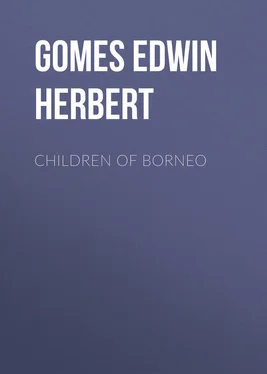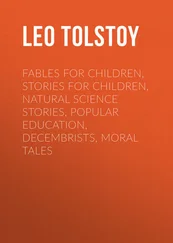Edwin Gomes - Children of Borneo
Здесь есть возможность читать онлайн «Edwin Gomes - Children of Borneo» — ознакомительный отрывок электронной книги совершенно бесплатно, а после прочтения отрывка купить полную версию. В некоторых случаях можно слушать аудио, скачать через торрент в формате fb2 и присутствует краткое содержание. Жанр: foreign_antique, foreign_prose, Путешествия и география, на английском языке. Описание произведения, (предисловие) а так же отзывы посетителей доступны на портале библиотеки ЛибКат.
- Название:Children of Borneo
- Автор:
- Жанр:
- Год:неизвестен
- ISBN:нет данных
- Рейтинг книги:5 / 5. Голосов: 1
-
Избранное:Добавить в избранное
- Отзывы:
-
Ваша оценка:
- 100
- 1
- 2
- 3
- 4
- 5
Children of Borneo: краткое содержание, описание и аннотация
Предлагаем к чтению аннотацию, описание, краткое содержание или предисловие (зависит от того, что написал сам автор книги «Children of Borneo»). Если вы не нашли необходимую информацию о книге — напишите в комментариях, мы постараемся отыскать её.
Children of Borneo — читать онлайн ознакомительный отрывок
Ниже представлен текст книги, разбитый по страницам. Система сохранения места последней прочитанной страницы, позволяет с удобством читать онлайн бесплатно книгу «Children of Borneo», без необходимости каждый раз заново искать на чём Вы остановились. Поставьте закладку, и сможете в любой момент перейти на страницу, на которой закончили чтение.
Интервал:
Закладка:
Edwin Herbert Gomes
Children of Borneo
I gratefully acknowledge the permission readily granted by Messrs Seeley & Co. Ltd., to make use of much matter that has already been published in my book, "Seventeen Years Among the Sea Dyaks of Borneo," and I would recommend that book to those who wish for more information about Borneo and its inhabitants.
Edwin H. Gomes.CHAPTER I
THE ISLAND OF BORNEO – JUNGLES – THE DYAKS – DYAK LIFE IN THE OLD DAYS
Away down in the Indian Ocean there is a long chain of islands that stretches from Burmah to Australia. One of these is New Guinea which is the largest island in the world (leaving out Australia), and Borneo comes next in size. It is nearly four times as large as England. One quarter of it – the States of Sarawak and British North Borneo – is under British influence. The rest is all claimed by the Dutch, excepting one small State, Brunei, between North Borneo and Sarawak, which is governed by a Malay Sultan, who is a Mahommedan. Sarawak is governed by an English Rajah, or King, Sir Charles Brooke, who succeeded his uncle, Sir James Brooke, in 1868; – British North Borneo is owned by an English Trading Company, called the North Borneo Company, who appoint an Englishman as Governor to rule it for them.
If you look at a map of Borneo you will see that the Equator divides the island into two parts, so that Borneo is right in the middle of the Torrid Zone. The climate is therefore tropical, that is to say there is no spring, autumn or winter, but only summer, and it is always much hotter in Borneo than it is in the hottest summer in England. So, if an English boy went to live in Borneo, he would find his English clothes too thick and warm for him to wear there, and he would have to have thin cotton garments.
Most of the country of Borneo is covered with thick jungle, where large forest trees grow close to each other, many of them with trunks over six feet in diameter. These trees are often loaded with creepers and ferns, and from the branches, high up overhead, beautiful orchids hang.
The natives of Borneo are called Dyaks, and these tropical jungles are their home. Let me try and describe to you what these people are like. They are not black like negroes, but have a brown skin. They are not as tall as Englishmen, but are slightly bigger than the Malays. The Dyak men and women wear very little clothing because of the great heat. The Dyak men wear a waistcloth which is made either of the soft inner bark of a tree, or else of cotton cloth. It is about one yard wide, and from eight to eighteen feet in length, and is twisted round and round their waists and pulled up tight between the thighs, one end hanging down in front and the other behind. Dyak women wear a short petticoat which is drawn tightly round the waist and reaches down to the knees. Round their bodies the women wear hoops of rattan, a kind of cane, and these are threaded through small brass rings placed so close together as to hide the rattan. Both men and women wear necklaces, bracelets, and ear-rings. The men wear their hair long, and they blacken their teeth and often file them to a point, or bore holes in them and insert brass studs into them.
Let me tell you something of the kind of life the Dyaks used to live in the old days. You have heard of the head-hunters of Borneo. Seventy years ago the Dyaks were one of the most savage and cruel people in the world. In those days there was constant warfare between the different tribes. The Dyaks therefore lived together in large numbers in long village houses, and round these houses they built strong stockades, as a defence against any sudden attack.
In those old days a party of Dyaks would often attack some neighbouring house. Such of the men as were at home would repel the attack as best they could, for defeat meant certain death. The women and children would be crowded together in the verandah of the Dyak house, and the men, armed with swords, spears and shields, would form a circle round them. Large brass gongs would be struck in a peculiar manner, to let the neighbours know of the attack, and to implore their help. The fight would continue till one party was defeated. If any came to the rescue, the attacking party would retreat, pursued by such of the inmates of the house as dared to follow them; but if no help came, the house would be rushed, the men and women cut down, and the children killed or taken captive. The heads of the dead would be cut off amid wild whoops of joy, and carried off in triumph.
The Dyaks thought it a grand thing to be able to bring home a human head to hang up as an ornament in their house. The man who succeeded in securing a human head was looked upon as a great warrior, and so very often the young braves would make an expedition against some tribe simply because they wanted to bring home the ghastly trophy of a human head.
Not only were the Dyaks head-hunters in those days, but many of them were pirates. There was a great deal of piracy, and it was secretly encouraged by the native rulers, who obtained a share of the spoil, and also by the Malays who knew well how to handle a boat. The Malay fleet consisted of a large number of long war-boats or prahus , each about ninety feet long or more, and carrying a brass gun in the bows, the pirates being armed with swords, spears and muskets. Each boat was paddled by from sixty to eighty men. These terrible craft skulked about in the sheltered coves waiting for their prey, and attacked merchant vessels making the passage between China and Singapore. The Malay pirates and their Dyak allies would wreck and destroy every trading vessel they came across, murder most of the crew who offered any resistance, and make slaves of the rest. The Dyaks would cut off the heads of those who were slain, smoke them over the fire to dry them, and then take them home to treasure as valued possessions. If you visit some of the Dyak houses to-day, you will see some of these human heads, taken in piratical raids in old days, hanging in bunches over the fireplaces.
The whole country in those old days was in a great state of disorder. The Dyaks were constantly at war, tribe against tribe, and no Dyak village was safe from sudden attack. Many human lives were sacrificed because the Dyaks wished, not only to obtain booty, but to satisfy their lust for blood, and indulge in their favourite pursuit of head-hunting, and gain glory for themselves by bringing home human heads to decorate their houses with.
CHAPTER II
THE COMING OF THE WHITE RAJAH – THE MISSIONARIES
I have told you, in the last chapter, what kind of people the Dyaks were, and how in the old days a great deal of their time was spent in piracy and in warfare against neighbouring tribes. Now I want to tell you of the coming of the White Rajah – James Brooke – to Borneo, and what he did there. I think every English boy and girl should know the remarkable and romantic story of how an Englishman came to be a King in Borneo, and to rule over the part of it called Sarawak.
James Brooke was born on April 29, 1803. His father was a member of the Civil Service of the East India Company, and spent a great many years in India. He followed his father's example, and entered the Company's service, and was sent out to India in 1825. Not long after his arrival, he was put in command of a regiment of soldiers, and ordered to Burmah, where he took part in the Burmese war. He was badly wounded, and had to return to England on leave. For over four years his health prevented him from rejoining his regiment, and when at last he started, the voyage took such a long time, owing to a shipwreck and other misfortunes, that he found on his arrival that his furlough had expired, and that his post had been given to someone else. He quitted the service in 1830.
Читать дальшеИнтервал:
Закладка:
Похожие книги на «Children of Borneo»
Представляем Вашему вниманию похожие книги на «Children of Borneo» списком для выбора. Мы отобрали схожую по названию и смыслу литературу в надежде предоставить читателям больше вариантов отыскать новые, интересные, ещё непрочитанные произведения.
Обсуждение, отзывы о книге «Children of Borneo» и просто собственные мнения читателей. Оставьте ваши комментарии, напишите, что Вы думаете о произведении, его смысле или главных героях. Укажите что конкретно понравилось, а что нет, и почему Вы так считаете.











